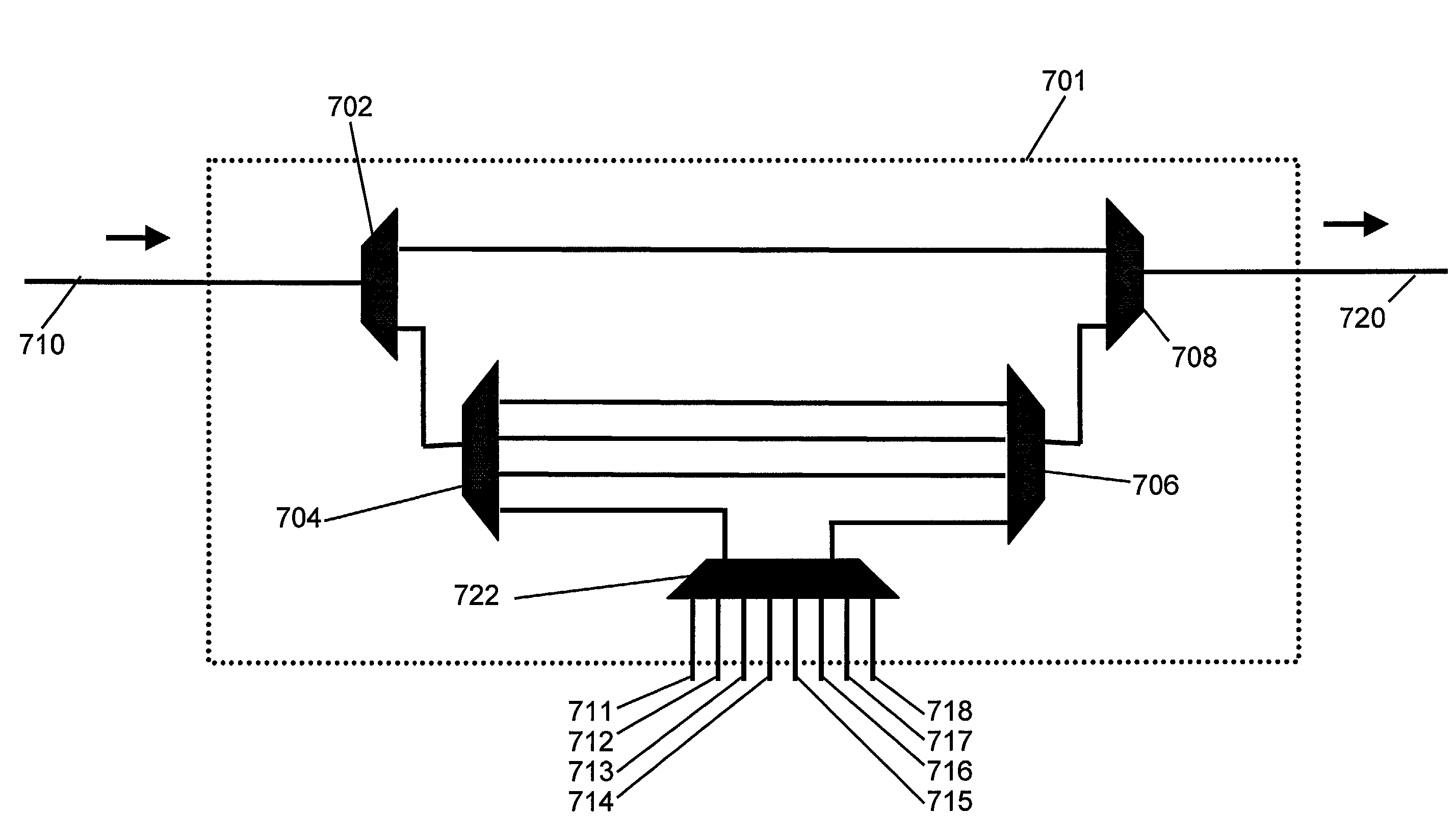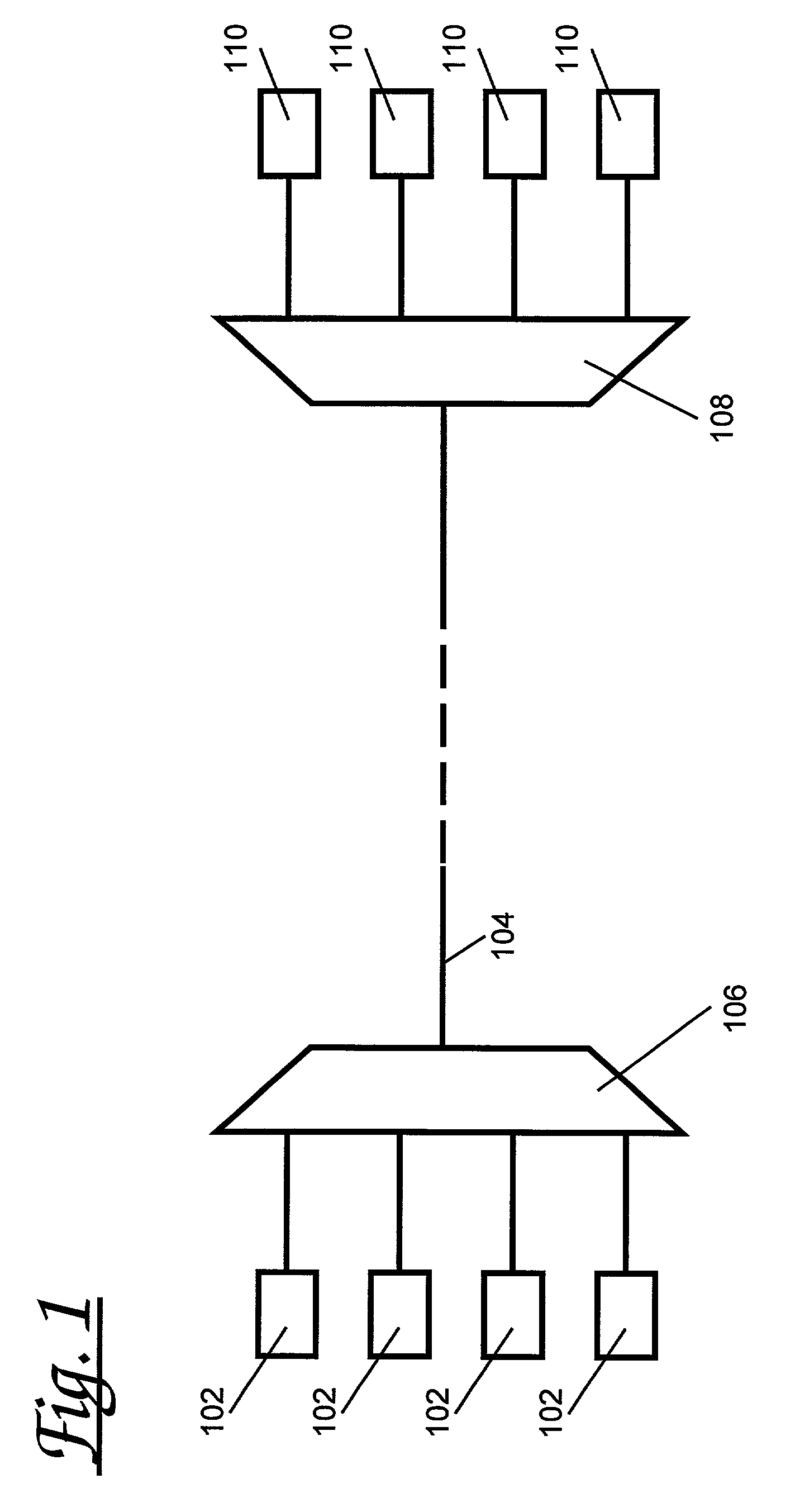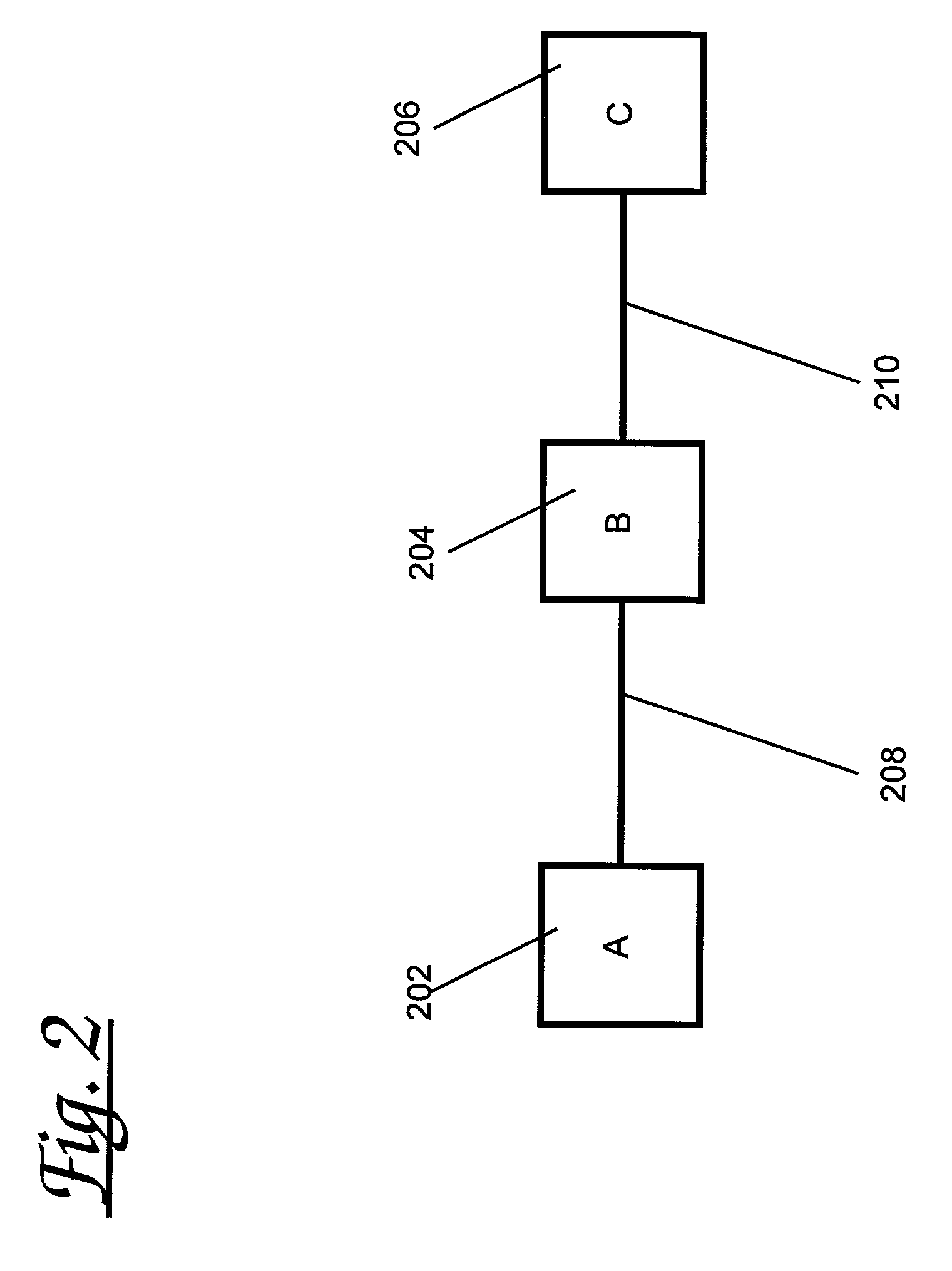Optical grating device
- Summary
- Abstract
- Description
- Claims
- Application Information
AI Technical Summary
Benefits of technology
Problems solved by technology
Method used
Image
Examples
first embodiment
[0057] Referring to FIGS. 7-9 there is shown the present invention. FIG. 7 shows a schematic diagram of an improved OADM device 701. The OADM contains two demultiplexors 702, 704, two multiplexors 706, 708, 5 input ports 710, 715-718, 5 output ports 711-714, 720 and an integrated add-drop channel filter 722.
[0058] An optical signal enters the OADM 701 along the optical input path 710. The optical signal carries 32 channels each on a different wavelength of light; channels 1-4, 6-9, 11-14, 16-19, 21-24, 26-29, 31-34 and 36-39. Every fifth channel is not used as this relaxes the wavelength accuracy and filter shape tolerances for the demultiplexors 702, 704 and multiplexors 706, 708 within the OADM. The demultiplexor 702 splits the input optical signal into two groups of wavelengths and outputs each along a different optical path. The first group of wavelengths (channels 1-4, 6-9, 11-14 and 16-19) is then input to a second demultiplexor 704, also called a band drop filter. This demult...
second embodiment
[0069] Referring to FIGS. 9-12 there is shown the present invention. A schematic diagram of an optical communications network is shown in FIG. 9. The network shown in FIG. 9 connects 6 different locations, A to F. It comprises 5 optical paths 902, 906, 910, 914, 918 and 4 OADMs 904, 908, 912, 916. An optical signal sent from location A travels along optical path 902. At location B there is an OADM 904 which drops and adds channels 1-4. The signal continues along optical path 906 until it reaches location C, where an OADM 908 drops and adds channels 6-9. The signal then continues along optical path 910 until it reaches location D, where an OADM 912 drops and adds channels 11-14. The signal then continues along optical path 914 until it reaches location E, where an OADM 916 drops and adds channels 16-19. The signal then continues to location F along optical path 918.
[0070] In addition to cost, size and power consumption, another important parameter when designing an optical system, ne...
PUM
 Login to View More
Login to View More Abstract
Description
Claims
Application Information
 Login to View More
Login to View More - R&D
- Intellectual Property
- Life Sciences
- Materials
- Tech Scout
- Unparalleled Data Quality
- Higher Quality Content
- 60% Fewer Hallucinations
Browse by: Latest US Patents, China's latest patents, Technical Efficacy Thesaurus, Application Domain, Technology Topic, Popular Technical Reports.
© 2025 PatSnap. All rights reserved.Legal|Privacy policy|Modern Slavery Act Transparency Statement|Sitemap|About US| Contact US: help@patsnap.com



